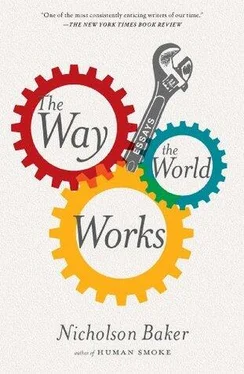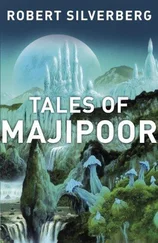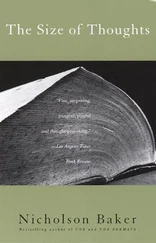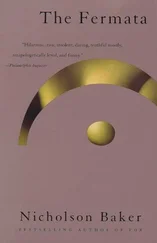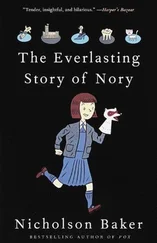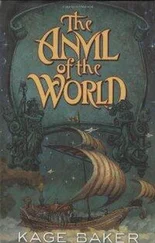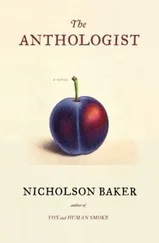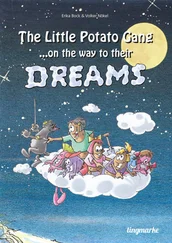One summer we moved from Boston, Massachusetts, to New York State. I was driving the old brown car and my wife was driving the new red car down Routes 5 and 20. There was a big hot blue sky and enormous trees. I rolled my window all the way down. Immediately the wind sucked a map of New York State off my dashboard. In my rearview mirror I saw the pale creased shape float on air for a moment, as if deciding what to do. Then it plastered itself to my wife’s windshield, where she pulled it inside. She waved.
One summer when I was fourteen I took care of an orange cat at a house owned by two minimalist painters. All their walls were flat white, and they had many of their paintings up — long, narrow paintings, with silver metallic paint sprayed in from the ends, dripping subtly. The lonely cat roamed this minimalist house, meowing. I read issues of Artforum neatly stacked on their coffee table. There was an article about an artist who created an empty room with a sloping wooden floor. The artist, whose name was Vito Acconci, “pleasured himself” under the sloping floor, while visitors walked around the room overhead. I fed the cat, pleasured myself, and rode my bike home.
One summer I wrote “Truth wears sunglasses” in my notebook.
(2005)
I learned how to read, in the sense of knowing how to follow a story with pleasure as it accumulates over many chapters, by being read to. My mother read us (my sister and me) the things she had liked as a child, with several additions — she took us through The Hobbit, Mistress Masham’s Repose, Tove Jansson’s Moominland books, Lear’s “The Pelican Chorus,” The Wind in the Willows, Winnie-the-Pooh, the Dr. Dolittle series, some Kipling, several Tintin books, and Hawthorne’s Wonder-Book. She was an expert at the seamless substitution of a comprehensible phrase for the more involuted elegancies of Hawthornian diction, a fact I discovered only after I knew how to read by eye and could compare her version with the text. Her shoulder had a bone in it that was comfortable against my temple; I was under the impression that I was hearing some of each book through that shoulder-bone. And I was interested in how entertained she was by certain scenes: how much she liked, for example, the image of Toad sitting entranced by the side of the road near his overturned canary-yellow traveling wagon, murmuring “Poop-poop!” at the dwindling sight of the motorcar that had just zoomed past. It only became funny after she laughed.
But the most emotional early reading experience I had was the devastating death of Thorin Oakenshield in The Hobbit. I had no practice then with the conventions of character flaws and the plot signals that such flaws provide, and thus Thorin’s greed and his brusque treatment of Bilbo didn’t tip me off that he, Thorin son of Thráin, King under the Mountain, wasn’t going to recover from the wounds of battle, even though my mother had gently tried to prepare me. I wept hard until I fell asleep. My mother wanted to abandon the book because it upset me so much, but the next night I convinced her that I could cry quietly, and she kept going until the end. It became one of my favorite books.
Two Tintin books— The Secret of the Unicorn and Red Rackham’s Treasure —were the first things I truly liked reading by myself. Golden Books was the publisher of a few Tintin titles then, and they had Americanized the text slightly: Haddock’s ancestral home was called Hudson Manor rather than the Marlinspike Hall of the other Tintins that we ordered later on from England like jars of marmalade. I loved the shark-shaped one-man submarine, and Tintin’s shameless habit of talking to himself in his diving helmet while he was being stalked by the real shark, and the scene in which Thomson and Thompson, tired out, forget to keep cranking the air pump that leads below. Following a brief post-Tintin apprenticeship with some Freddy the Pig volumes, the first small-type reading I did was of The Wonderful Adventures of Nils: attractive because it was an ostentatiously thick edition and had a promising high-altitude goose-riding scene and concerned a person with a name similar to my own. After a chapter or two I could hardly follow what was going on, though, and I finished Nils joylessly, out of brute pride. The second thick book was 20,000 Leagues Under the Sea, which we owned in an old translation with fancy marbled boards. Since the only other use of leagues that I knew of was in the story of the cat with the seven-league boots, the notion of descending a full 20,000 leagues seemed eerily grownup. And the phosphorescent undersea glow of the Nautilus as it approached or fled from a ship at night was a glow that I have been on the lookout for in reading ever since.
(1996)
When I come across something I really like in a book, I put a little dot in the margin. Not a check, not a double line — these would be pedantic — but a single nearly invisible tap or nudge of the pen tip, one that could almost be a dark fleck in the paper. In fact, sometimes as I’ve flipped through a book that I read closely years before, my eye has been caught by an actual paper-blemish that I have taken to be one of my own dots of approval, and I’ve stopped to read slowly through some undistinguished passage, prepared for beauty — and sometimes the beauty is discoverably there, and sometimes it isn’t, and then, suspicious, I bring the page close to my eye and inspect the dot and find that I was misled.
It’s best not to make too many dots — no more than, say, ten or fifteen for a single book. Compared with underlining, or highlighting in yellow or pink, the dot method is unobtrusive — that’s one of its great advantages. I can reread a book that I have dotted here and there, and yet not be too distracted by the record of my earlier discoveries. And I can feel secure in the knowledge that if others idly open my books, they won’t be able to see at a glance what interested me — they won’t say to themselves, He thought that was good?
But my method is not only to mark the passages I like. I also write the number of the marked page in the back. Then — and this is the most important part — at some later date, sometimes years later, I refer to the page numbers, locate the dots, and copy out the passages that have awaited my return into a spiral-bound notebook. About fifteen years ago I fell behind — I have dozens, probably hundreds of books with a column of page numbers written in the endpapers whose appealing sentences or paragraphs I have not yet transcribed. Sometimes many months will go by without my adding anything to my copybook. But it is almost the only handwriting I do now, aside from writing checks, and whenever I take up the studious pen and begin, it makes me a happier person: my own bristling brain-urchins of worry melt in the strong solvent of other people’s grammar.
My first notebook dates from 1982, when I was twenty-five. On page 2 is a sentence from Boswell’s Life of Johnson: “I passed many hours with him, of which I find all in my memorial is, ‘much laughing.’” Back then, I did a lot of the copying on lunch hours in Boston, and on weekends at a dark restaurant near Park Street Station called the Mug ’n Muffin, where I ordered a coffee and a blueberry muffin, which would arrive sizzling, after two full minutes in the industrial microwave, too hot to remove from its fluted wrapper, and which then, as I obliviously transcribed, would slowly turn to stone. At nearby tables, Bible students from Park Street Church would have long, hoarse conversations about God’s love, shaking their heads over His mercy as they stubbed out their cigarettes. Every few months at the Mug ’n Muffin there was a rich, almost chocolatey smell of some comprehensive insecticide. It was the perfect place for longhand.
Читать дальше
